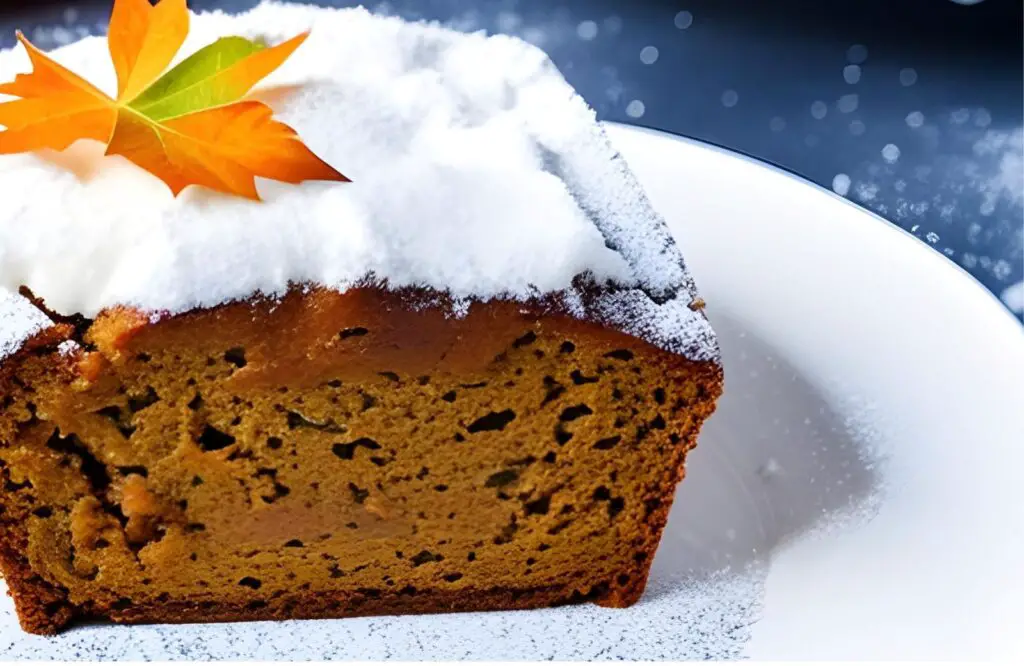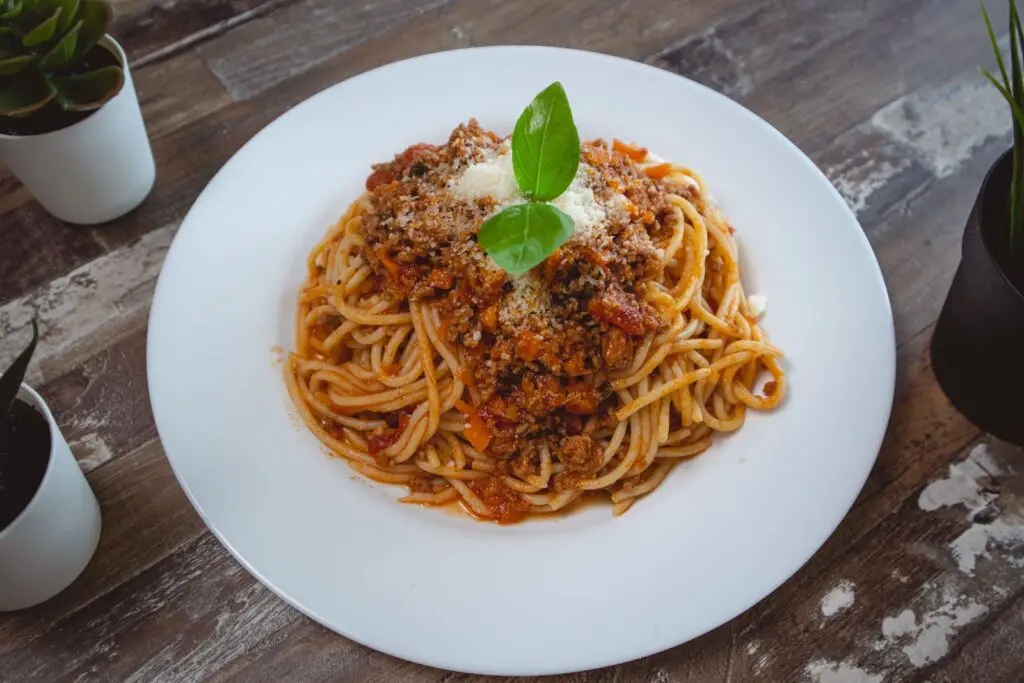
Tomato pie is a delicious and savory dish that features ripe tomatoes, flavorful herbs, and a flaky crust. Whether you’ve made a homemade tomato pie or have some leftovers from a gathering, freezing it can be a great way to preserve its taste and enjoy it at a later time. Freezing tomato pie is a simple process that can help you savor the flavors of summer even when tomatoes are out of season. In this article, we will provide you with a step-by-step guide on how to freeze tomato pie while ensuring its texture and flavor remain intact.
Here’s a guide on how to freeze tomato pie:
Step 1: Prepare your tomato pie
To begin, you’ll need to have a freshly made tomato pie ready for freezing. You have two options: you can either make the tomato pie yourself using your favorite recipe or purchase a pre-made one from a bakery or store. Whichever option you choose, ensure that the pie is fully cooked before freezing.
If you decide to make the tomato pie from scratch, gather the necessary ingredients and follow your preferred recipe. Typically, a tomato pie consists of a flaky crust filled with ripe tomatoes, herbs, cheese, and other flavorful ingredients. Once the pie is assembled, bake it in the oven according to the recipe’s instructions.
In case you opt for a store-bought or bakery-made tomato pie, ensure that it is cooked and ready for consumption. You can find tomato pies in the frozen section of some stores or freshly baked ones in the bakery section. Check the packaging or inquire with the bakery to ensure that the pie is fully cooked before freezing.
After the tomato pie is cooked, allow it to cool down to room temperature before moving on to the freezing process. This step is crucial as freezing a hot or warm pie can lead to condensation, which may affect the pie’s texture and result in freezer burn. By letting the pie cool completely, you ensure that it retains its taste and quality during freezing.
Step 2: Wrap the pie
After the tomato pie has cooled down to room temperature, it’s time to protect it from freezing. Wrapping the pie tightly with plastic wrap is essential to maintain its quality and prevent freezer burn.
Freezer burn occurs when moisture in the food evaporates and forms ice crystals on the surface. These ice crystals can cause the food to become dehydrated and develop a dry, off-flavor. By tightly wrapping the tomato pie with plastic wrap, you create a barrier that helps minimize moisture loss and protects the pie from exposure to air.
To wrap the tomato pie, start by tearing off a piece of plastic wrap that is large enough to completely cover the pie. Carefully place the pie in the center of the plastic wrap. Then, bring the sides of the plastic wrap up and over the pie, ensuring that it is fully covered. Use your hands to press and mold the plastic wrap around the contours of the pie, creating a snug and airtight seal.
Pay attention to any openings or gaps in the plastic wrap and make sure they are sealed securely. This will help prevent air from reaching the pie, reducing the risk of freezer burn. Take your time to ensure that the plastic wrap is tightly wrapped around the pie, leaving no exposed areas.
Can I freeze individual slices of tomato pie?
Yes, you can freeze individual slices of tomato pie. Follow the steps mentioned in this article, but wrap each slice separately with plastic wrap and then proceed with the double-wrapping and labeling process.
Step 3: Double-wrap with aluminum foil
To further safeguard the tomato pie from freezer burn and maintain its quality, it’s recommended to double-wrap the plastic-wrapped pie with aluminum foil. The aluminum foil acts as an additional layer of insulation and helps preserve the pie’s moisture.
Freezer burn occurs when moisture within the food evaporates and freezes on the surface, leading to dryness and flavor degradation. By double-wrapping the tomato pie with aluminum foil, you create an extra barrier against moisture loss and protect it from exposure to air.
To double-wrap the tomato pie, take a sheet of aluminum foil that is larger than the pie. Place the plastic-wrapped pie in the center of the foil and bring the sides of the foil up and over the pie, covering it completely. Ensure that the foil is tightly sealed around the pie, crimping the edges to create a secure package.
The aluminum foil acts as a reflective barrier, helping to maintain a stable temperature within the pie and reducing the risk of freezer burn. It provides an additional layer of insulation and minimizes the transfer of cold air to the pie’s surface, helping to retain its moisture and flavor during freezing.
Step 4: Label and date
After double-wrapping the tomato pie with aluminum foil, it’s important to label and date the package. This step is crucial for easy identification and helps you keep track of the freezing duration.
Using a marker or a label, write the name of the dish, in this case, “Tomato Pie,” on the aluminum foil. This will help you quickly identify the contents of the package when searching through your freezer.
Additionally, note down the date of freezing on the label. Write the month, day, and year to provide a clear reference of when the tomato pie was frozen. This information is essential as it allows you to monitor the storage time and prioritize the consumption of older frozen items.
Labeling and dating your frozen tomato pie package not only assist with organization but also help you maintain food safety. It ensures that you can identify and consume the tomato pie within the recommended storage duration while it remains in its best quality.
Remember to use a waterproof marker or label to ensure that the writing remains intact throughout the freezing process.
Step 5: Place in the freezer
Once you have wrapped and labeled the tomato pie, it’s time to store it in the freezer. Proper placement within the freezer is essential to ensure the pie remains intact and maintains its shape during freezing.
Carefully transfer the wrapped and labeled tomato pie to the freezer. Choose a spot in your freezer where it can be positioned in a flat and stable manner. Placing it on a level surface, such as a freezer shelf, will help prevent the pie from getting squished or deformed.
Avoid placing the tomato pie near the freezer door or in a location where it may be easily jostled or disturbed. The stability of its position is important to preserve the pie’s appearance and prevent any potential damage while it freezes.
By placing the tomato pie in a flat and stable position, you ensure that it retains its shape and structure throughout the freezing process. This is particularly important if you plan to serve the pie in slices or want to maintain its presentation when thawed.
Take care to arrange the pie in a way that it won’t be obstructed by other items or compressed by heavier items in the freezer. This will help maintain the integrity of the pie and allow for optimal freezing and thawing results.
Step 6: Freeze the tomato pie
After placing the wrapped and labeled tomato pie in the freezer, it’s time to allow it to freeze. Freezing the pie solidifies its contents and helps maintain its quality during long-term storage. The freezing time can vary depending on the size and thickness of the pie.
It is generally recommended to freeze the tomato pie for a minimum of 2-3 hours, or until it becomes completely solid. However, the exact freezing time may vary depending on factors such as the size of the pie, the ingredients used, and the efficiency of your freezer.
Thicker and larger pies may require more time to freeze completely, while smaller or thinner pies may freeze relatively faster. It’s essential to monitor the pie’s freezing progress and ensure that it is frozen solid throughout.
Keep in mind that freezing time is not an exact science and may require some adjustments based on your specific circumstances. If in doubt, it’s always better to err on the side of caution and allow the pie to freeze for a bit longer to ensure it is fully solidified.
Step 7: Package for long-term storage
Once the tomato pie is completely frozen, it’s time to package it for long-term storage. Transferring the pie to a freezer-safe container or a resealable freezer bag provides an additional layer of protection against freezer burn and helps keep your freezer organized.
Freezer-safe containers are specifically designed to withstand the low temperatures of the freezer without cracking or warping. They provide a secure and airtight seal, minimizing the exposure to air and preventing freezer burn. Choose a container that is appropriately sized to accommodate the frozen tomato pie without leaving excess space, as this can increase the risk of freezer burn.
Alternatively, you can use a resealable freezer bag that is specifically designed for freezer storage. These bags are made from thicker, more durable materials and have a zip-top closure, allowing you to remove excess air and create a tight seal around the pie. Make sure to choose a bag size that fits the pie snugly.
When packaging the frozen tomato pie, remove it from the aluminum foil and plastic wrap, as they were primarily used to protect the pie during the freezing process. Place the unwrapped pie carefully into the freezer-safe container or bag, ensuring that it is placed in a flat and stable position. This helps maintain the pie’s shape and prevents any potential damage.
Seal the container or bag securely, removing as much air as possible to minimize the risk of freezer burn. For bags, press out excess air before sealing, while containers should be closed tightly according to their specific design.
Step 8: Return to the freezer
Once the tomato pie is securely packaged in a freezer-safe container or bag, it’s time to return it to the freezer for long-term storage. Proper placement and allowing for adequate air circulation are essential for maintaining the quality of the pie.
Carefully place the packaged tomato pie back into the freezer, ensuring it is stored in a flat and stable position. Placing it on a level surface, such as a freezer shelf, will help maintain the shape and integrity of the pie. Avoid stacking or cramming items on top of the pie, as this can cause damage or deformation.
Leaving some space in the freezer around the pie is important for proper air circulation. Adequate airflow helps maintain a consistent temperature within the freezer, ensuring even freezing and reducing the risk of temperature fluctuations that can affect the pie’s quality.
Additionally, allowing space between items in the freezer prevents them from sticking together, making it easier to access and remove the tomato pie without disturbing other frozen items.
Remember to be mindful of the placement of the pie in relation to other frozen items in the freezer. If possible, keep it away from strong-smelling or pungent foods to avoid flavor transfer.
How long can I store a frozen tomato pie?
For the best quality and taste, it is generally recommended to consume the frozen tomato pie within 2-3 months. During this period, the pie is likely to retain its flavor, texture, and overall appeal. After 2-3 months, the quality of the pie may start to decline. Freezer burn, which can affect the taste and texture, may become more pronounced. The pie may lose its freshness and may not taste as flavorful as when it was initially frozen.
Other related questions
How do I defrost tomato pie?
To defrost a tomato pie, it is best to follow a gradual thawing process in the refrigerator. Place the frozen pie on a plate or in a container to catch any condensation. Allow it to defrost in the refrigerator for 24-48 hours or until completely thawed. Avoid defrosting at room temperature to prevent bacterial growth. Once fully thawed, the tomato pie can be reheated in the oven or microwave following the original baking instructions or until heated through.
Can I refreeze tomato pie?
Refreezing tomato pie is generally not recommended due to the potential quality loss and food safety concerns. When a previously frozen pie is thawed, bacteria can multiply, and refreezing it can further compromise its safety. It is best to consume the tomato pie after the initial thawing to ensure optimal taste and minimize the risk of foodborne illnesses.
How do I know if the tomato pie has gone bad after being frozen?
To determine if a frozen tomato pie has gone bad, you should consider several factors. First, check for any signs of freezer burn, such as discoloration or dry, shriveled areas on the pie’s surface. Additionally, if the pie has an off smell or an unusual texture, it may indicate spoilage. Lastly, trust your senses and avoid consuming the pie if you have any doubts about its quality or safety.
Can I freeze leftover tomato pie?
Absolutely! If you have leftover tomato pie, you can freeze it for later enjoyment. Follow the steps outlined in this article to wrap, label, and freeze the leftover pie. Make sure it is cooled to room temperature before freezing.
Can I freeze a tomato pie with a custard or cream-based filling?
While tomato pies with custard or cream-based fillings can be frozen, it’s important to note that the texture of the filling may change slightly upon thawing. The filling may become softer or more liquid. Consider this factor when deciding to freeze a tomato pie with custard or cream-based fillings.
Can I freeze a tomato pie with added vegetables or meats?
Yes, you can freeze a tomato pie with added vegetables or meats. Ensure that any additional ingredients are fully cooked before assembling the pie. Freeze the pie following the steps mentioned in this article, and be aware that the texture of certain ingredients, like vegetables, may slightly change upon thawing.
Can I freeze a tomato pie with toppings such as cheese or herbs?
Yes, you can freeze a tomato pie with toppings such as cheese or herbs. Ensure that the toppings are well-covered and sealed within the packaging to prevent them from becoming freezer burnt or losing their flavor. The toppings may change slightly in texture upon thawing but should still retain their overall taste.
Should I freeze the tomato pie before or after baking?
Tomato pies are typically frozen after baking and cooling. This allows the pie to set and ensures that the crust is fully cooked. However, if you prefer to freeze an unbaked tomato pie, you can do so by following the steps mentioned in this article and adjusting the baking time accordingly when you decide to bake it
Can I freeze a tomato pie made with a gluten-free crust?
Yes, you can freeze a tomato pie made with a gluten-free crust. Follow the same freezing process outlined in this article, ensuring that the pie is fully cooked and cooled before wrapping and freezing it.








